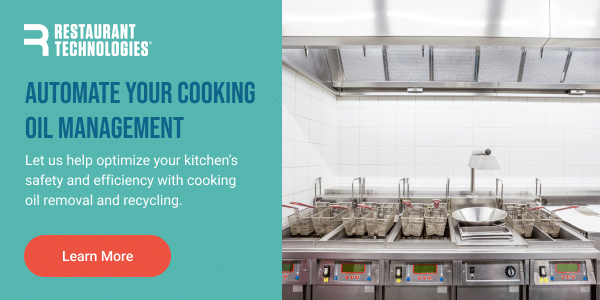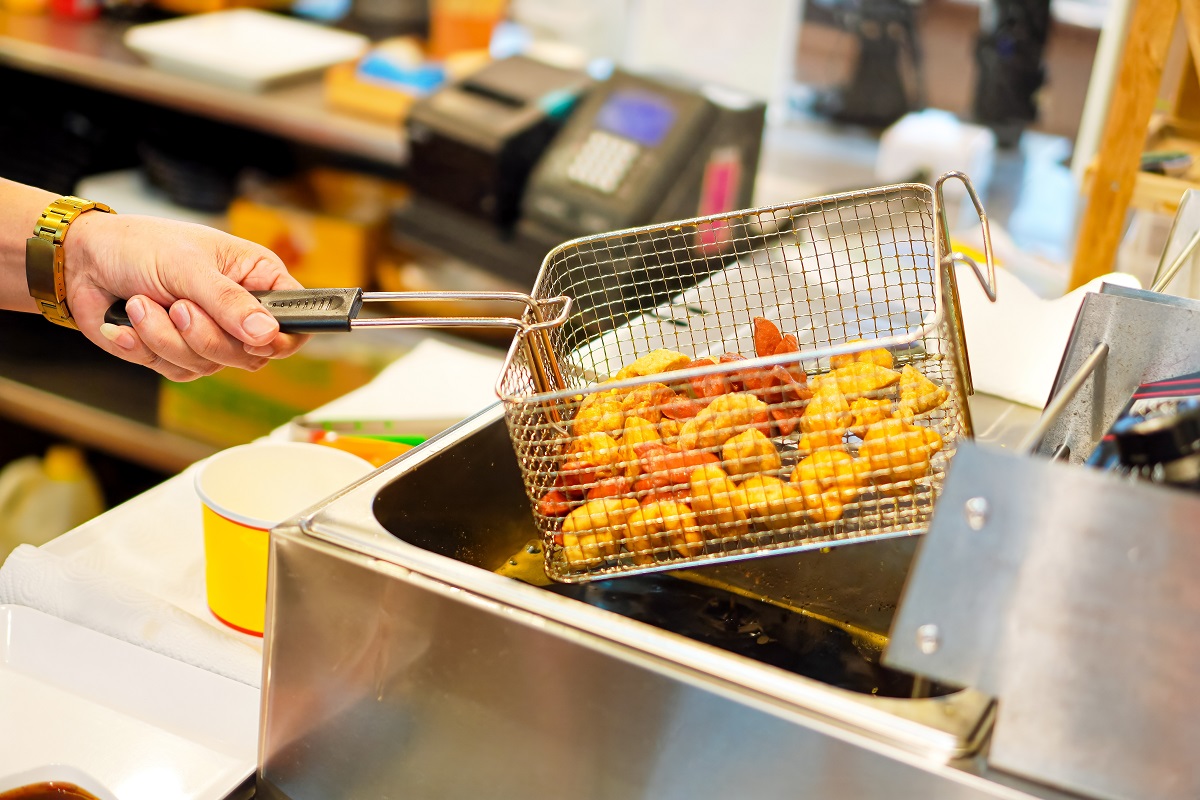If you’re tightening your purchasing strategy, but food costs still aren’t budging, you’re not alone. Operation leaders across the industry are doing more with less, yet margins keep slipping.
Food cost inflation is a real and persistent challenge. But often, the source of that ongoing drain isn’t found on your invoices. It’s happening in your kitchen.
From fryer oil management to re-cooked meals, hidden waste can quietly eat away at profits. This post is designed to help shift the conversation from purchasing to performance, and find margin where it’s being lost every day.
The Real Drivers of Food Waste
Poor Oil Quality Leads to Poor Food Quality
When oil is overused or poorly maintained, food quality can take a hit. Fries turn soggy, coatings darken too fast, and flavors suffer. These inconsistencies can lead to re-cooks, higher plate waste, and even complaints that chip away at customer trust.
Re-cooks cost more than ingredients. They can burn time, delay service, and demoralize staff.1 The bigger issue is that food cost issues aren’t being tied back to the source: oil quality.
No Visibility Means No Accountability
Without a clear way to monitor oil quality, many kitchens operate on instinct or routine. Oil might get dumped too early “just in case,” or worse, kept too long because no one knows when it last got filtered.
The result is the same: waste. Either in the form of excessive oil spend, or inconsistent food output that leads to more shrinkage.
“Just in Case” Dumping Adds Up
Kitchen staff often make conservative decisions when it comes to oil, especially during busy shifts. If oil looks questionable, they dump it. But those premature disposals can quietly push up the cost per plate, something purchasing teams can’t see from their end.

Why Better Oil Management Matters
Longer Oil Life and Better Food
When oil is filtered at the right time and under the right conditions, it lasts longer and performs better. That means consistent color, crispness, and flavor, all while using less oil overall.2
Smart oil management tools help take the guesswork out of the process. Rather than relying on visual checks or timers, staff can filter when it’s actually needed. This keeps oil fresher and food more consistent.
Real-Time Data Makes the Difference
Top operators are now using oil monitoring systems that offer real-time data on oil life, quality, and usage trends. This information lets managers adjust filtration schedules, compare store performance, and reduce waste without sacrificing food quality.
In short, these tools give you the same control over your oil program that you already have with purchasing.
Fewer Dumps, Higher Margins
Every avoided dump is oil that didn’t need to be replaced. When teams can extend oil life without sacrificing quality, that directly lowers the cost per plate. These small operational wins compound quickly, especially across multi-unit concepts.3
What Top Operators Are Doing Differently
Aligning Oil Programs with Food Quality Goals
The best-performing kitchens don’t treat oil like a maintenance task, but a key part of food execution. By working to address oil health to help directly improve guest experience, kitchen teams can work towards building better habits to achieve better results.
Restaurant Technologies (RT) works with many partners to implement closed-loop oil systems that help automate filtration, track oil performance, and make food quality easier to manage.4
Benchmarking Across Stores
With insights into oil data, some operators can now compare oil life, filtration habits, and dump frequency across locations. This helps spot outliers, reward top performers, and guide underperforming teams.
This benchmarking is especially powerful when paired with sales and food cost data. You can finally see where the gaps are and fix them.
Tracking Labor, Oil, and Waste Together
Leaders in operations don’t typically look at food cost in isolation. They connect labor time, oil usage, and food waste to better understand how they affect one another.
If a location is overusing oil and has high ticket times, it might not be a training issue. It may actually be a process issue. By zooming out, these leaders can find more meaningful fixes and longer-term gains.
Actionable Takeaways
Audit Oil-Related Waste
Start with a simple question: How often are we changing oil, and why? If the answer is based on habit or a preset schedule, you may likely have waste hiding in your fryer.
Track the number of dumps per week, the amount of oil used per pound of food, and how often food is re-cooked due to oil issues. You’ll start seeing patterns.
Filter Based on Quality, Not Guesswork
Instead of filtering “just because it’s Tuesday,” use oil monitoring tools to help assess oil condition in real time. Staff can make better informed decisions that will help naturally extend oil life.
A closed-loop oil system can support automating this entire process. No more carrying hot oil or guessing when to filter.
Look Beyond Ingredient Costs
If your food cost problem isn’t solving itself with better buying, investigate your back-of-house habits. Oil waste, inconsistent prep, and equipment misuse are often the root causes that purchasing can’t typically solve on its own.
Why Oil Automation Is Worth Exploring
In many kitchens, oil handling can be one of the most overlooked sources of waste. It can also be one of the easiest to automate.
A closed-loop system like Total Oil Management can potentially automate everything from oil delivery and filtration to disposal. This in turn helps eliminate the need for staff to lift and carry heavy JIBs (jug-in-box containers) of oil, stay out of danger zones, and focus on food.
Gaining visibility into oil usage and can also help tie it directly to food quality and cost performance. The result? Fewer dumps, more consistent product, and clearer food cost control.
Final Thoughts
You can’t solve rising food costs by focusing only on your purchasing spreadsheet. The bigger opportunity lies in what’s happening behind the line.
Oil use is often the missing link between food spend and food quality. When it’s managed with data instead of guesswork, you’ll start to see margins move in the right direction.
If you want to reduce re-cooks, improve consistency, and stretch your dollars further, it’s time to rethink oil management.
Want to see what oil waste is costing your kitchen?
Talk to an RT expert today to learn how food quality ties back to oil use.
Sources:
- Wansink, Brian, and Koert Van Ittersum. Fast Food Restaurant Drive-Thru Performance Study. Columbia Business School, 2012. https://business.columbia.edu/sites/default/files-efs/pubfiles/5373/customer_wait_fastfood.pdf
- Fast Casual. Case Study: Automated Oil Management Solution Reduces Cost, Increases Safety. https://www.fastcasual.com/articles/case-study-automated-oil-management-solution-reduces-costs-increases-safety/
- Fast Casual. Case Study: Automated Oil Management Solution Reduces Cost, Increases Safety. https://www.fastcasual.com/articles/case-study-automated-oil-management-solution-reduces-costs-increases-safety/
- World Copper Smith. Kitchen Accidents Statistics. https://www.worldcoppersmith.com/articles/kitchen-accidents-statistics/#







